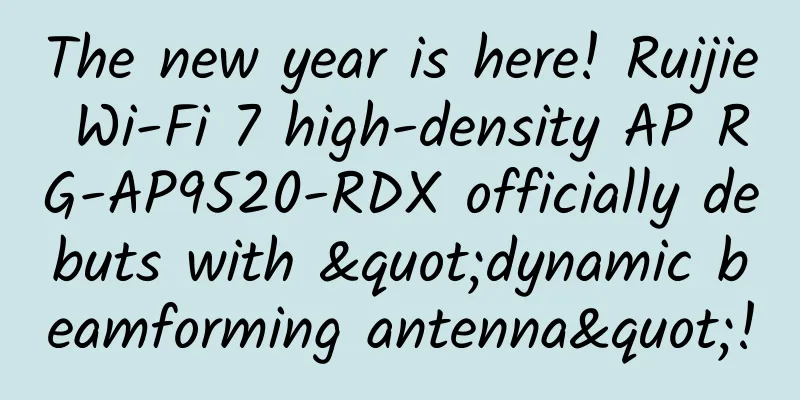A topic worth pondering: Will the birth of Wi-Fi 7 replace 5G networks?

|
In recent years, wireless technology has developed rapidly, and the freedom it provides has changed every aspect of our work and life. It can be said that where there is a network, WiFi is everywhere! The History of WiFiThe history of WiFi can be traced back to 1971, when the University of Hawaii provided the first public demonstration of the wireless packet data network ALOHAnet, which operated on UHF (ultra-high frequency) radio waves. The system included seven computers distributed on four islands that could communicate with the central computer on Oahu without telephone lines. At this time, the prototype of the wireless network had actually been born. In 1985, at the urging of FCC engineer Michael Marcus, the U.S. telecommunications regulator opened the ISM (industrial, scientific and medical) band of the wireless spectrum for use for communications without government permission, releasing frequencies including: 900 MHz, 2.4 GHz and 5.8 GHz. In 1988, CR Corporation and AT&T Corporation released WaveLAN, intended for use in cash register systems. Proposed as a wireless alternative to existing Ethernet and Token Ring systems, WaveLAN operated at 900MHz or 2.4GHz, providing speeds of 1 to 2 Mbps. In 1989, NCR submitted the WaveLAN design to the IEEE (Institute of Electrical and Electronics Engineers) 802 LAN/MAN standards committee. In 1990, the IEEE 802.11 Wireless LAN Working Group was chaired by Vic Hayes, the "Father of WiFi". In 1996, Australia's Commonwealth Scientific and Industrial Research Organisation (CSIRO) patented a technique for reducing multipath interference in radio signals transmitted over computer networks, a technique developed by John O'Sullivan that eventually found its way into the 802.11a (and later) standard. Since then, starting from 1997, versions of the 802.11 protocol began to be born!
Brothers, please note that the latest 802.11 protocol has reached AX, which is what we often call WiFi 6. The speed has reached an astonishing 10000Mbps, which can be roughly regarded as a transmission rate of 10G per second. The speed can be described as terrible! WiFi 6 is so powerful, what about WiFi 7? WiFi 7Wi-Fi 7, also known as 802.11be, is the next Wi-Fi standard being developed by the Institute of Electrical and Electronics Engineers. It has a speed of up to 46Gbps, which is nearly five times faster than Wi-Fi 6 and has much reduced latency. Wi-Fi 7 has extremely high throughput and can provide higher spectral efficiency, higher power efficiency, better interference mitigation, higher capacity density and higher cost efficiency. WiFi 7 Features1. 320MHz channel bandwidth Thanks to the wider channels and capacity gains of the 6GHz spectrum, Wi-Fi 7 can provide huge throughput gains. Wi-Fi 7 can provide peak rates of over 40 Gbps, which is 4 times that of Wi-Fi 6E. 2. Multi-link capability Wi-Fi 7 introduces several multi-link options that can significantly increase throughput and reduce latency. The most powerful multi-link alternative is High-Band Simultaneous Multi-Link, which uses two Wi-Fi radios operating simultaneously in the high band (5 or 6 GHz), creating an aggregate data pipe to provide the best performance. 3. 4K QAM Wi-Fi 7 is standardizing an advanced modulation scheme called 4K QAM, which can increase peak rates to increase throughput and capacity compared to Wi-Fi systems using 1K QAM modulation. 4. Flexible channel utilization This technological advancement is based on puncturing the preamble to avoid interfering channels, thereby enabling the use of wider channels even in the face of interference. 5. Multi-AP operation In previous Wi-Fi standards, each access point was independent in accepting connection requests from endpoints and moving traffic back and forth to that endpoint. Multi-AP operation creates a mesh configuration in which adjacent APs can work in coordination to improve spectrum and resource utilization. Multi-AP operation can be programmed so that a group of APs forms a subsystem in which channel access and transmission scheduling can be tightly coordinated. Will WiFi 7 replace 5G?Since WiFi 7 is so powerful, will it replace the equally powerful 5G? The answer is definitely: No! These two are completely different things. Wi-Fi is a local area network (LAN) that is primarily used indoors, such as in a home or workplace. Cellular networks, such as the 4G LTE networks used by major carriers, are wide area networks (WAN) that are used both indoors and outdoors, and typically over long distances. 5G networks will offer 50 times the speed, 10 times the latency, and 1,000 times the capacity compared to 4G/LTE, which means 5G will be able to connect more devices and transfer more data than ever before, providing fast connections and significantly enhancing the user experience. As with LTE, mobile operators will offer subscription services for their 5G networks, which will require 5G-enabled devices. Therefore, 5G technology and WiFi technology will always be complementary! Wi-Fi has low deployment, maintenance and expansion costs, so it is generally used for access networks, while 5G is used for mobile connections such as smartphones, connected cars, smart city deployments, and can even be used in large-scale manufacturing scenarios. SummarizeThis article mainly introduces the history of WiFi, the basic knowledge of WiFi7, and also analyzes its relationship with 5G. I hope this article will be helpful to you! |
<<: 5G development requires a long process
>>: Shengye: Equipping "engineering projects" with a digital brain
Recommend
.com domain prices expected to rise for first time in eight years
According to foreign media reports, ICANN, the or...
QuChain Technology settles in Huawei Cloud and will jointly build integrated blockchain services
On September 6, during HUAWEI CONNECT 2017, Huawe...
HostYun: Russia's two-way CN2 line with large bandwidth KVM, monthly payment starts from 22 yuan
HostYun has been providing Russian CN2 line VPS f...
Slow Wi-Fi? Want to make it 4 times faster? Try these tips!
In the modern Internet era, the highest productiv...
RackNerd Los Angeles restock, low-cost US VPS annual payment starts from $9.89
RackNerd is a foreign hosting company founded in ...
TmhHost Double 11 Promotion: Japan/Korea/Los Angeles CN2 GIA quarterly payment from 88 yuan
TmhHost has launched a Double 11 promotion, and p...
Can 5G, which was boasted 10 years ago, be realized?
5G is on the verge of launch, and the telecommuni...
GSA: 140 operators in 59 countries and regions around the world have launched commercial 5G networks
GSA recently released the "LTE and 5G Market...
Huawei launches Fertile Soil Plan 2.0, investing US$1.5 billion over the next five years to help developers build the computing industry
At HUAWEI CONNECT 2019, Huawei officially launche...
Animation explains TCP. If you still don’t understand, please hit me up
Preface The TCP three-way handshake process is a ...
The role of edge computing and 5G in healthcare
Technology has changed the way we conduct diagnos...
How to choose DCIM, a data center infrastructure management tool?
DCIM (Data Center Infrastructure Management) is a...
How to realize LoRa networking without a gateway?
As a low-power wide area network communication te...
DediPath: $49/month-E3 1270/16GB/2TB/1G unlimited traffic/5IP/Los Angeles data center
[ Promotion code expired ] Title This should be th...









